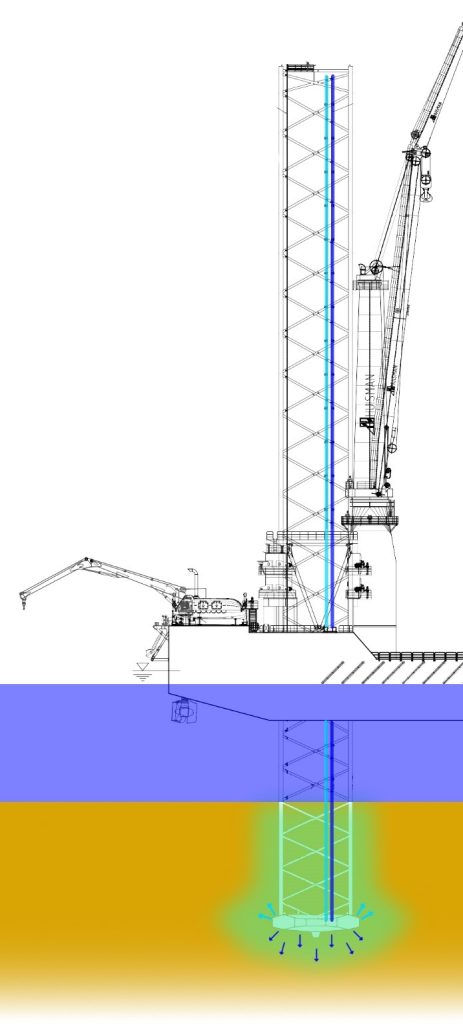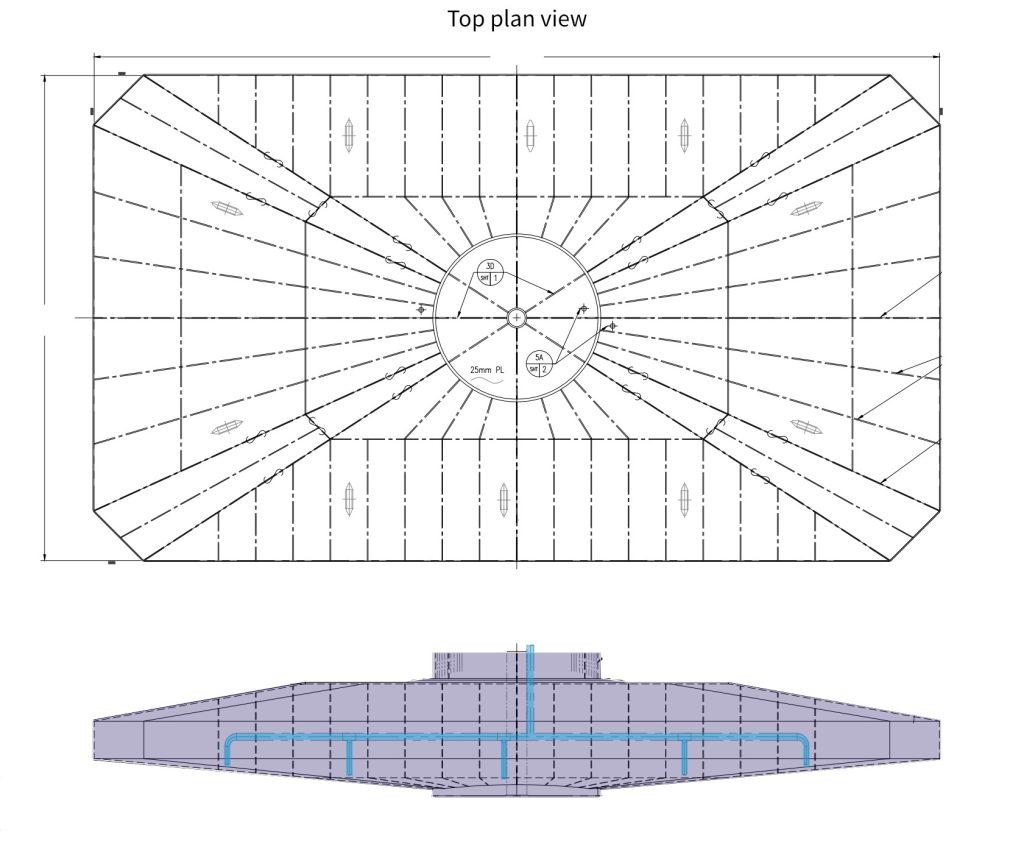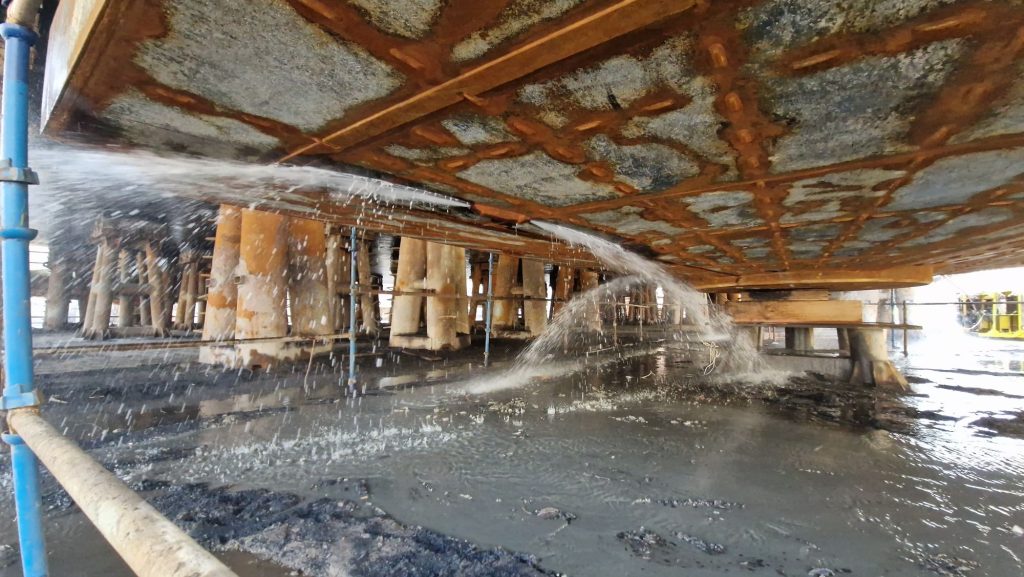The penetration of the legs depends on the seabed type and its characteristics. Jetting systems are used to liberate the legs from the mud, when departing from the location.
If Jackup is elevated on a location with a soft seabed, the penetration through the soil will be deep. It might be challenging to release the legs from the mud on departure from that location. If the buoyancy does not provide enough lifting force the legs might get stuck under the weight of the soil above them.

That is why jackups are equipped with JETTING SYSTEMS (assembly of pumps, pipelines, and nozzles).
The system is using pump to drive water through the pipes in the legs, to the jets installed in the footing, and softens and liquefies the mud around the spudcan.
A designated pump could be fitted for jetting, or a ballast pump could be connected to the jetting pipeline.
The pump will push the water through the jetting pipeline, through the leg, to the nozzles placed on the leg footing.
Once the water is released from the nozzles it fills the vacuum and liquefies the mud around and above the footing. The process takes time, depending on the soil characteristics and penetration depth.
While the jetting takes place, the hull is submerged OVER the floating draught, in order to provide additional buoyancy which helps to pull the leg out.
When using this technique, it is important to note that submerging the hull exerts stress on the legs. We should never go over the limits in the operation manual.
The effectiveness of jetting systems depends on the type of soil, the shape and size of the spudcans, and the specific conditions of the seabed.

